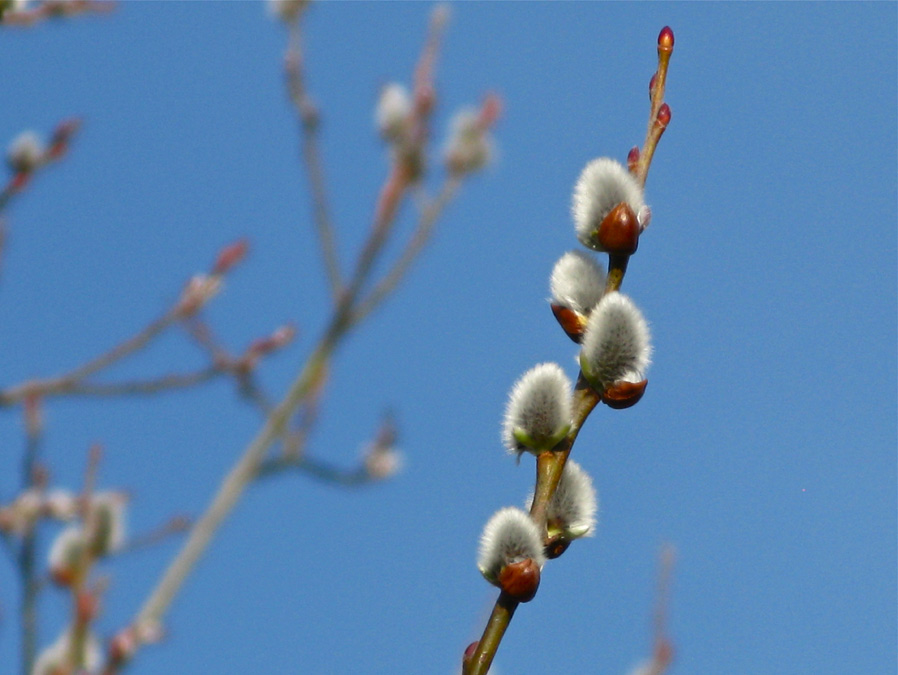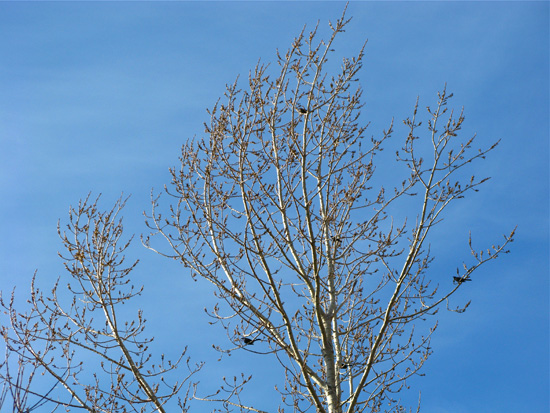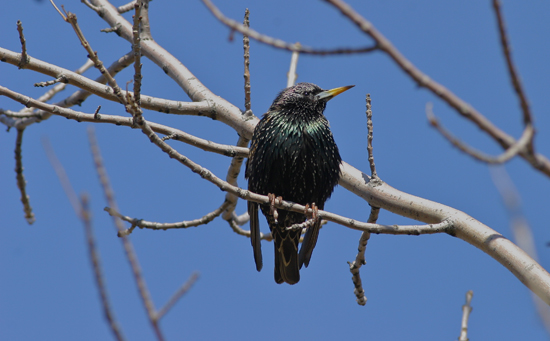

The pussy willows have bloomed at Ashbridge's Bay Park. © BCP 2010
It may be drizzling out — that’s a good thing, I think! — but a couple of days ago, when the sun was shining brightly, I went down to the beach and took a few pictures of the new life that is springing forth.
The pussy willow native to North America is Salix discolor. Before its male catkins come into full flower (a brilliant yellow) they are covered in soft, grey, downy fur, leading to their feline nickname. The catkins appear much sooner than the leaves of the plant, making them another one of the very early signs of spring.
As mentioned in an earlier post, the male red-winged blackbirds are back from their winter vacation in the south. And so are the other, less noticeable blackbirds. Here is an eastern cottonwood (Populus deltoides) by the footpath through the brush at water’s edge that is filled with blackbirds checking out the territory.
And a common starling near the marsh at Woodbine Park. The much reviled common, or European starling (Sturnus vulgaris), a non-native species introduced long ago from the Old World, is an opportunistic bird that loves urban areas, where it tends to out compete other native songsters. That’s all true, but I happen to love starlings anyway. Can there be a happier, more uplifting sound in the world than a tree full of starlings singing, chirping, clacking, whistling, and copying all the sounds of our city neighbourhoods?
And something about their hardiness, their indomitable spirit, is special too. Yah, yah. I know they’re trouble. But just look at how handsome they are!
© BCP 2010


- Blackbirds in a cottonwood at the beach, March 18, 2010. © BCP 2010


The glossy iridescence of a common starling makes him a sight to behold. © BCP 2010


no comments